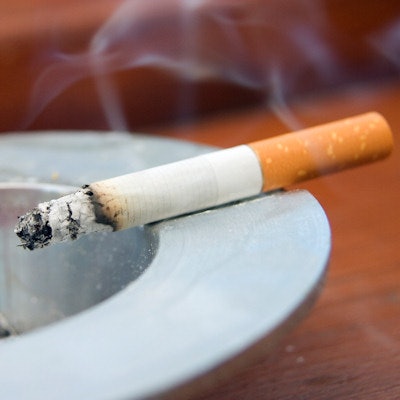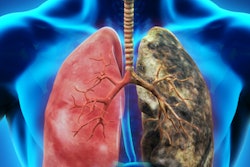
A few annual rounds of negative CT screening exams might not be enough to rule out lung cancer in the long term, according to an article published online July 10 in Radiology. A group from Canada found a high incidence of early-stage cancer in high-risk individuals several years after the conclusion of initial screening.
The researchers found a high prevalence of cancer in high-risk smokers who had participated in a major CT screening study -- years after the study concluded. The results indicate that lung cancer screening programs may need to continue screening for longer periods than were used in research studies demonstrating lung screening's value, according to first author Dr. John Kavanagh from University Health Network in Toronto.
"The most convincing evidence regarding the utility of CT lung cancer screening stems from research studies such as the National Lung Screening Trial, which offered three rounds of screening over two years and had a defined end point," Kavanagh told AuntMinnie.com.
To address whether the risk of developing lung cancer decreases after several rounds of negative screens, Kavanagh and colleagues contacted 327 participants in the International Early Lung Cancer Action Program (I-ELCAP) who had negative initial screening results. The researchers extended follow-up CT screening to these individuals after confirming they were at high risk of lung cancer based on a risk assessment model that accounted for age, smoking history, body mass index, and number of years since smoking cessation, among other factors.
On average, the individuals' risk of developing lung cancer within six years was 5.6%. The median time since their most recent screening exam was seven years, with a range of five to 10 years.
Among the 327 people contacted, 35 had a recent diagnosis of lung cancer and 19 had died of lung cancer. Of those who were able to undergo follow-up CT screening, 14 turned out to have lung cancer and six agreed to undergo surveillance imaging for suspicious findings.
In total, the prevalence of new diagnoses of lung cancer in individuals who had negative findings on initial CT screening at a median of seven years prior was 20.8% (68 out of 327 contacted). The lung cancer detection rate for follow-up CT screening was 7% (14 out of 200 screened).
"The results of the study by Kavanagh et al strongly suggest that many patients at the highest levels of risk for lung cancer would benefit from screening well beyond three annual rounds," wrote Dr. William Black from Dartmouth-Hitchcock Medical Center in an accompanying editorial. "However, the net benefit of screening will not always increase with risk because net benefit declines with decreasing life expectancy and increasing morbidity."
The population of this prospective study was at particularly high risk of developing lung cancer because of their older age (74 years compared with 61 years in the National Lung Screening Trial) and more extensive smoking histories, the authors noted.
"In future screening populations, a negative baseline screening examination may be used in combination with risk models to identify a group of low-risk individuals to be screened at longer intervals," they wrote. "The definition of the optimum screening interval may be different for various groups of individuals and will be the subject of future studies."



















